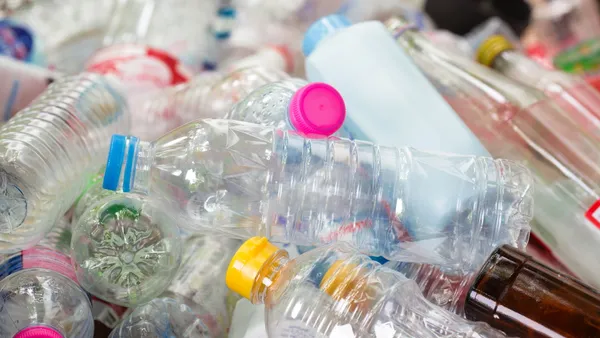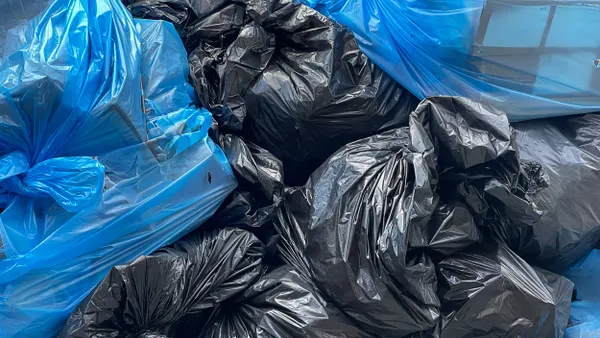Dive Brief:
- Connecticut's Department of Energy and Environmental Protection (DEEP) announced a new set of standardized recycling rules for the entire state on Nov. 15. This came after a year of collaboration between the state, local governments and the private sector, including the state's six main MRFs, as reported by The News-Times.
- The new "What's In, What's Out?" campaign is being driven by the RecycleCT Foundation. Through the RecycleCT website, residents can see exactly what is accepted curbside. Some of the "out" items include loose bottle caps, prescription bottles, plastic bags, aerosol containers, coffee pods, expanded polystyrene foam, ice cream containers, shredded paper, take-out containers, paper cups, foil yogurt tops and paint cans.
- The RecycleCT site includes information on how to otherwise recycle some of these unaccepted items, grants and programs for local governments to utilize, and social media resources to promote the campaign.
Dive Insight:
Like in many cities and states, Connecticut's high diversion rate goals have been running up against challenges with contamination. DEEP is working toward a goal of 60% diversion by 2024 by focusing on waste reduction, organics diversion and other areas. The RecycleCT Foundation was created in 2015 as a result of the same legislation that set the 2024 goal. Unlike some of its New England neighbors, Connecticut hasn't reported as much difficulty with recent recycling market fluctuations. Though contamination remains a top issue for recycling programs around the country regardless of market options.
While a handful of cities and counties have recently expanded their programs to include some of the items that Connecticut is telling residents aren't accepted, many more are hesitant to make any big changes right now. At a recent meeting, the Institute of Scrap Recycling Industries' MRF Council deferred any decision on whether to recognize the recyclability of coffee pods, foodservice packaging, or a specific flexible packaging program.
With the right sorting equipment and end markets, it's possible to capture much of this material in certain regions, but Connecticut has decided it's not one of them. That doesn't mean the state doesn't support recycling some of those materials. For example, it has invested a lot of time into the Wrap Recycling Action Program, among others.
The overall goal here appears to be demystifying the curbside recycling process for residents and business owners, through an easy to understand campaign. As demand for contamination solutions grows, other states around the country will be watching the results in Connecticut with great interest.











